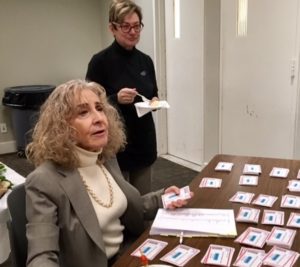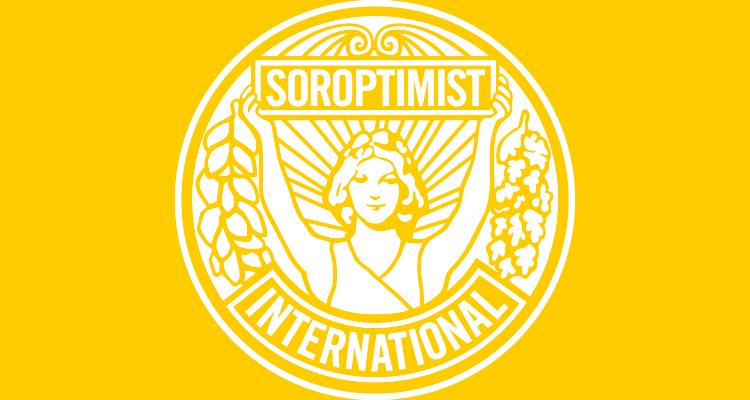Did you ever wonder how these commissions, forums and other multi-day meetings actually happen?
Soroptimist International New York representative Bette Levy explains all that goes on behind the scenes to arrange a recent meeting at the United Nations headquarters, the 56th Commission for Social Development.
“It takes a lot of work and coordination on the part of the UN Secretariat responsible for the particular meeting, the elected Bureau Members and Civil Society. There are months of bilateral meetings, negotiations, planning and ultimately compromises.
For the recent 56th Commission for Social Development, the partners included Department of Economic & Social Affairs (DESA) – Division of Social Policy & Development (DSPD) (the Secretariat), the Bureau (chaired by Iceland) of the 45 member Commission, and the NGO Committee for Social Development (Civil Society). All three are necessary if civil society attendees get to truly participate and have an outcome that is more than governments just patting themselves on the back.
In spite of a very cooperative and progressive Bureau, this year there were many unforeseen events that lead to many missteps and working overtime so that the 10 days of the Commission could flow so smoothly. There was a change in Bureau leadership, a change in the program associates from DESA and challenges with a new calendar. As the Commission began on Monday instead of Wednesday, we had to separate the orientation to the Sunday before the Commission and host the Civil Society Forum on Friday after the first week, that brought an interesting twist to programming. Also, not to mention the missing in action CS Forum co-chairs. Yet to those who attended none of this was obvious.
This is the type of crisis that your SI reps get involved with all the time. In this case Marie, as Treasurer of the NGO Committee jumped in and took on all sorts of roles that are not in her role description from sending our notices, creating flyers, organizing a side event, coordinating with DESA and UN Security for secondary pass lists, hiring a printer and then editing the booklet that was handed out to member states and attendees. Marie turned to the SI team and asked for help.

SI UN Representatives Sandy Hecker and Marie D’Amato Rizzi
Sandy stepped up to coordinate the volunteers and registration the day of the forum (secondary passes). She recruited a team of 10 volunteers who all showed up at 8:00 am on a freezing cold morning to distribute tickets, escort people to the conference room, hand out booklets and other odd jobs for a program that formally began at 10:00 am. Marie recruited me (Bette Levy) to help with developing and coordinating the program for the Civil Society Forum. The people responsible for the program need to have first-hand knowledge of the Commission, the NGO Committee, the topics that will be discussed, and a network of colleagues they can ask to speak or recommend speakers. They must be able to write formal letters of invitation that identify and give expectations of the speaker. It is the personal knowledge and contacts that make the difference. This is where UN Reps really excel.
This program entailed working with the theme the Committee had selected while connecting it to other processes that go on in the UN. My goal was to have this Commission not be in a silo but rather served as the first formal ECOSOC fora of the year leading up to HLPF (where SDGs are reviewed). When planning a program you have to understand the UN protocols of who must be invited to speak, in what order and not to slight your colleagues from within the UN system. Also, the planner has to recognize that attendees travel from around the world and they want to “rub elbows” with the elite of the Commission. There usually is a formal opening by the NGO chair of the Committee and the forum co-chair, there are welcomes from the Bureau Chair and a high up UN DESA person, and since NGO CSocD has a funder someone from the funding source. Next up is usually a keynote speaker. This year we were very lucky that our keynote speaker was quite well known in the UN circles and had already been invited to speak during the commission. But the trick is that your keynote speaker has to bring in the crowds.
Usually, you have an interactive panel, the number of people depends on your goal. If you just want to share information in presentation format only, time constraints dictate the number of speakers but if you truly want it to be interactive you have to limit the number of speakers and try to ensure they compliment each other. You want to hear diverse sides of issues or whom they represent. For this forum where the topics were poverty eradication and social protection floors, it was important to hear from someone living in extreme poverty, one of the committee members recommended a priest from the Dalit community. It was important to hear from a member state, China as one of the Bureau’s vice chairs agreed to participate. The group wanted someone from the private sector on the panel, so I asked a friend who runs a socially and environmentally friendly business to join the panel. The panel was rounded out with the Director of the DESA division (DSPD) speaking from what they could do globally. They each spoke briefly and our moderator, a well known former chair of the Committee asked them a series of questions before opening it up to questions from the attendees.
After a jammed packed morning session, there is usually is a one to two-hour lunch break and then you return for a more informal, interactive afternoon session. There was an open discussion on the draft Civil Society Declaration and final comments were incorporated into the document that was to be formally given to the Bureau chair to officially go into the UN record.
SI UN Representative, Bette Levy moderates the networking group at the CSocD Civil Society Forum.

SI UN Representative, Bette Levy
Finally, we broke up to regional groups where people had an opportunity to network with other people from their region to discuss what they were doing, and with the task of individually coming up with action plans how best prepare themselves, their NGOs and their regional networks for the upcoming HLPF in July. It is important that the regional groups understand the connection between poverty eradication, leaving no one behind and the interface with goals 6, 7, 11, 12, 15 & 17 (being reviewed this year).
Once a program is completed you want to make sure that you have the participants fill out an evaluation either right there or online. So that you can look at what worked and what didn’t work because planning for the next program usually starts shortly after you finish the program.

